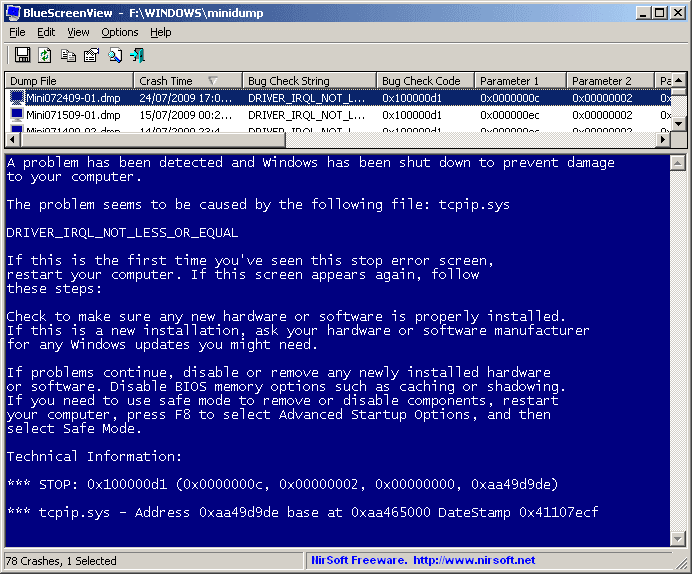
You'll find information suitable for very old (10 years) cards at this forum post. Again, screen resolution may be very low, increase it if necessary.See step 5 above (you won't need any privileges though).Chances are that your screen resolution will be very low! You can try increasing it by right-clicking on your desktop, selecting Properties, dragging the Screen resolution slider and clicking Apply.Reboot into Safe Mode (hit F8 when Windows starts loading and select Safe Mode).
 Open the Control Panel, click on Software, select the entry for your driver and click Uninstall. Set up the drivers (Anti-Aliasing, overclocking, etc.). Reboot (The installer should ask you to). Install the new drivers for your video card. You can run Driver Sweeper again if you want to make sure you got everything. Reboot (Driver Sweeper will ask you to). Driver Sweeper should list a lot of files not covered by the driver's uninstaller. Check your driver provider (ATI or NVidia+PhysX), click Analyze. Run Driver Sweeper (with administrative privileges). Windows will automatically revert to its default drivers. Reboot (you should be asked to do this anyway). In the confirmation window, check Delete driver software and click OK. If there isn't such an entry, open the Control Panel, click on System-> Device Manager, open the Display Adapters section, right-click the entries for your video cards and click Uninstall. Open the Control Panel, click on Programs and Features, select the entry for your driver and click Uninstall. This one is optional of course, so apply at your own risk.
Open the Control Panel, click on Software, select the entry for your driver and click Uninstall. Set up the drivers (Anti-Aliasing, overclocking, etc.). Reboot (The installer should ask you to). Install the new drivers for your video card. You can run Driver Sweeper again if you want to make sure you got everything. Reboot (Driver Sweeper will ask you to). Driver Sweeper should list a lot of files not covered by the driver's uninstaller. Check your driver provider (ATI or NVidia+PhysX), click Analyze. Run Driver Sweeper (with administrative privileges). Windows will automatically revert to its default drivers. Reboot (you should be asked to do this anyway). In the confirmation window, check Delete driver software and click OK. If there isn't such an entry, open the Control Panel, click on System-> Device Manager, open the Display Adapters section, right-click the entries for your video cards and click Uninstall. Open the Control Panel, click on Programs and Features, select the entry for your driver and click Uninstall. This one is optional of course, so apply at your own risk.  Download Driver Sweeper (freeware) or a tool with similar functionality. Make sure that you've got sufficient administrative rights by disabling User Account Control or opening system-related controls with administrative privileges. Use the "Find Driver" or "Autodetect" or manual search tools on the homepages to find a driver compatible with your operating system and video card. Download a suitable driver for your video card. Note Some laptops have more than one graphic card in that case, you should repeat each item listed below for each video card.
Download Driver Sweeper (freeware) or a tool with similar functionality. Make sure that you've got sufficient administrative rights by disabling User Account Control or opening system-related controls with administrative privileges. Use the "Find Driver" or "Autodetect" or manual search tools on the homepages to find a driver compatible with your operating system and video card. Download a suitable driver for your video card. Note Some laptops have more than one graphic card in that case, you should repeat each item listed below for each video card. 
This general procedure applies for all video cards. If installed properly, the video driver itself can be ruled out as a culprit for visual anomalies in FlightGear on Windows. The following procedure, albeit being a bit long, avoids possible problems arising from the driver installation itself.
5 What's this OpenGL? Why do I need its support?. 1.3 Legacy procedure for old nVidia cards.







 0 kommentar(er)
0 kommentar(er)
